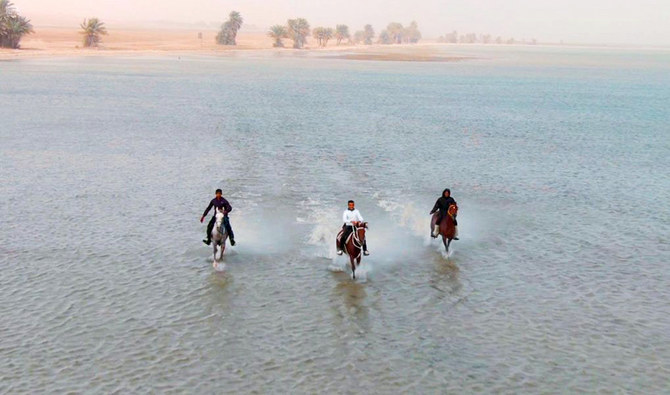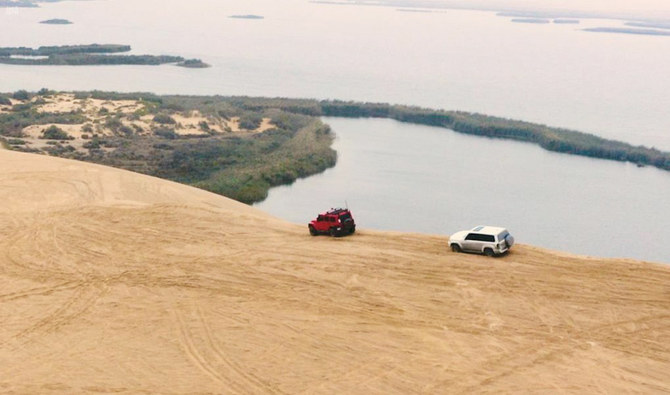JEDDAH: Safari trips will feature among more than 300 tourist packages offered as part of the Saudi winter season campaign.
The campaign will continue until the end of March under the slogan “Winter is Around You,” with packages available through the Visit Saudi website and app.
Tourist packages are provided by more than 200 tourism agencies.
With 100 members, the Al-Ahsa Safari team is promoting tourism in the Eastern Province by focusing on the desert experience, exploring the region’s heritage and monuments, and sharing its diverse natural attractions and climate.
Leader of the Al-Ahsa Safari team, Yasser Al-Sari, said that among the highlights is Al-Asfar Lake, which is located in the heart of the desert and is about 25 km in length.
“The lake is surrounded by large green areas, with palm trees overlooking it from a distance. It attracts many species of migratory birds in both winter and summer. It also attracts thousands of tourists from inside and outside the Kingdom,” he said.
Following the launch of the Saudi winter season campaign, the Al-Ahsa Safari team is receiving up to five requests every week to organize wild safari trips.
Trips range from half-day explorations to overnight camping.
Al-Sari said that the colder weather makes the experience more distinctive, with visits to natural and archaeological sites, including Al-Asfar Lake, Al-Fanajeel Desert, Samman Desert, Hozoum Al-Shouaib, Jabal Al-Arba’a, Al-Bassal Plateau and the Empty Quarter.
Safari trips also offer fun experiences and an opportunity to explore Al-Ahsa’s landmarks, an especially attractive option for domestic tourists.
Prices vary according to services provided, including transport, desert camps (locally known as “kashta”), horse and camel rides, archery, sand skiing, paragliding, and four-wheel-drive photography expeditions into the dunes.
HIGHLIGHTS
• With 100 members, the Al-Ahsa Safari team is promoting tourism in the Eastern Province by focusing on the desert experience, exploring the region’s heritage and monuments, and sharing its diverse natural attractions and climate.
• Tourist packages are provided by more than 200 tourism agencies.
Safari trip operators are committed to implementing all preventive measures adopted by the Ministry of Tourism in coordination with the Ministry of Health and the relevant authorities to ensure the safety of workers and participants, and to curb the spread of the coronavirus disease (COVID-19).
Al-Ahsa is widely considered to have the greenest and most fertile land in Saudi Arabia’s Eastern Province, while also housing prominent archaeological and historical sites.
In 2015, it became the first Gulf city to be included in UNESCO’s Creative Cities Network in the fields of crafts and folk art.
The network brings together 180 cities from 72 countries to place creativity and cultural industries at the heart of their development plans at the local level, and to cooperate actively at the international level.
The second achievement was UNESCO’s designation of Al-Ahsa as a World Heritage Site in 2018, becoming the fifth such Saudi site.
Moreover, Al-Ahsa was chosen as the Arab Tourism Capital for 2019 by the Arab Ministerial Council for Tourism.
Many Saudi regions are rich in diverse natural environments that offer tourists unique safari trips during winter.
Launched by the Saudi Tourism Authority in more than 17 destinations in the Kingdom, the Saudi winter season campaign seeks to shed light on these regions in order to attract tourists during the Hijri mid-year holidays.

























